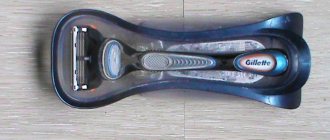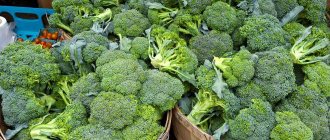A few decades ago, a refrigerator was a luxury item, but today not a single kitchen can do without it. This is a very great helper in the household, which makes life easier and safer. However, not all housewives know how to store food in the refrigerator correctly. If you do this in compliance with the requirements of SanPiN, the products will not dry out, become stale or moldy. Let's look at the basic rules for storing food in the refrigerator.
Storing things in the apartment
7. Rings from an old bathroom screen can be attached to a hanger and used to store all your baseball caps, scarves and T-shirts.
8. To make it more convenient at your desk, you can use LEGO pieces. Some of them are attached to the table with double-sided tape, while others are already attached to them.
9. If you don't already have a place to dry your clothes, use a ladder or stepladder.
In this example, a small ladder was hung from the ceiling, but you can simply lean it against the wall or buy a stepladder on the steps of which you can hang clothes.
Putting things in order: sorting
Before choosing the appropriate way to store documents at home, use the idea of sorting and then organizing. Sorting is needed in order to identify papers with an expired statute of limitations.
Particularly prudent individuals have the habit of hiding every piece of paper that comes into their hands, including food receipts and certificates. The aspiration is laudable, but it has a downside: the paper archive grows to indecent sizes and an indecent amount of time is spent searching for a truly necessary document.
Sorting Source res.cloudinary.com
The statute of limitations on papers varies from a month to infinity, so it makes sense to thin out paper deposits to get rid of useless ballast. The easiest way to obtain information about the statute of limitations of a document is from the person who issues it. The following types of papers are permanently stored (as long as they are relevant):
- Documents for real estate, car (while you are the owner).
Plastic box for papers Source cdn1.ozone.ru
- Family: marriage and birth certificates, wills.
- Relating to education (certificates, diplomas), work and retirement.
- Notarized papers.
- Related to health, for example, hospital discharges, examination results. Receipt stubs from private clinics, which may be needed for insurance payments, are saved for 2 years.
Interior storage systems Source yellowhome.ru
Receipts for large and expensive purchases are retained for the period specified in the warranty card, in the standard case - 12 months. Receipts and checks for payment of utility bills, as well as the services of a doctor, teacher, lawyer, must be saved for 3, maximum 5 years, after which they are disposed of.
In a desk drawer Source i.pinimg.com
How to store clothes
10. Conveniently store jeans and handbags.
Many people do not want to get rid of old jeans and even sometimes wear them. Over time, these things accumulate and you can get your jeans mixed up.
To store your jeans conveniently, you will need hangers, regular elastic bands and paper or cardboard.
Just hang each pair on a hanger, cut out a small tag from cardboard or paper and write on it the characteristics of each pair or where you usually wear these jeans. After this, make holes in the tags and use an elastic band to attach them to the hangers.
To know where to find the handbag you need (if you have a lot of them), you can resort to a little trick - make your own handbag catalog.
Buy a plastic basket and put all your bags in it. You can organize handbags of different colors and styles into several small baskets.
But first, take a photo of each handbag and put the printed photos in an album. This way you will know in advance which handbag you want to take with you and where it is stored.
The same can be done with shoes - take a photo of each pair and stick the photo to the box with the shoes so that you know which box contains which shoes.
Why order is important
The question of how to store documents at home, and ideas to help solve it, will be relevant for all those who have at least once spent a lot of time trying to find the right paper. But order is needed not only (although this is valuable in itself) so that the necessary documentation can be found at any time.
Valuable paper documents need to be carefully stored away from prying eyes. Not only their loss, but sometimes even damage results in a long process of restoration, repeated tedious visits to various authorities. Recovery can take a lot of time, nerves and money.
Everything is at hand Source img-emlakjet.mncdn.com
There is another reason for storing paper documents neatly. In the event of force majeure, when you have to urgently leave your home (fire, flood), they try to save the most necessary things, money and documents. If the latter lie unknown where, there is a high risk of being left completely without them.
Using the cart Source postroika.biz
We store small things
14. We store all the hairpins in one place.
You will need:
- a small plastic box (like the one from tic-tacs)
- acrylic paint (optional).
You can store all the hairpins in a small box, but if you want to decorate your box, you can use acrylic paint for this. In this example, the lid was also painted, but for this you need to use spray paint, and such paint should only be used outdoors or in a well-ventilated area with safety glasses and a mask (this paint is poisonous).
Wash them and take care of them beforehand
Make sure you only store freshly washed clothes. Firstly, stains are removed much easier the sooner they are treated, and unwashed clothes attract parasites. Of course, clothes must also be completely dry. Also, of course, there should be no holes in the clothes. Take care of such minor defects before storing them.
You'll be glad at the start of next season when the items are immediately wearable without the need to wash and care for them first.
Where else to store various things
15. Slippers, flip flops, and ballet flats can be stored neatly in regular magazine holders.
16. If you not only want to neatly store all your decorations, but also want these decorations to look beautiful in the interior, you can use photo frames or picture frames.
To do this, you need to attach small nails or hooks to the frames and pull strong threads on which the decorations are hung.
Some decorations can be hung on hooks that are pre-attached to the frame itself.
Don't put too much in one box
Clothes should not be stored completely compressed. As a result, some items of clothing may lose their shape. Protect your shoes from deformation by stuffing them with newspaper or using a special shoe stretcher. If you store clothes vertically in a box using the file folding method, you can see what's inside at a glance, and if you feel the need for a thicker sweater on a cool summer evening, you can still quickly get it out of the box.
How to store shoes
20. Additional shelves for shoes.
21. To save more space, you can attach a hook to the bathroom door on which you can hang a laundry bag.
22. By fastening several ordinary drawers together, you can make an original closet for clothes, shoes and various small items.
It is better to first treat such boxes with sandpaper and, if desired, they can be painted.
You can fasten them together in several ways, for example using screws or paper clips.
Sort and categorize
To do this, first remove everything from the closet. Sort through clothes that you haven't worn all season, that you no longer like, or that are broken. You can donate or donate items that are in good condition. Broken ones are immediately thrown away. Then sort the rest into categories, such as: winter sweaters, summer sweaters, long sleeve shirts, summer dresses, etc. Put only the items needed for that season in your closet. Again, it's best to keep the categories separated.
Lemons
Here, on the refrigerator door, I have lemons. To prevent them from spoiling, I don’t put them in a bag. As you can see, the cut lemon is lying cut side down on my saucer. To prevent the cut from drying out, I dip the lemon in sugar and place it on a plate. And if you need lemon for a savory dish, then I dip it in salt and also store it on a saucer, cut side down.
I most often store tangerines and oranges on the balcony. And when there are very few of them left, I put them on the refrigerator door without a bag.
Differences between departments
Different levels are used to cool food in containers and dishes. Some models of equipment have built-in containers for certain supplies. They increase the shelf life of the contents. The temperature in the general compartment near the walls and in the immediate vicinity of the freezer compartment is lower. The numbers can be adjusted within 1–8˚C heat, but 5˚C is considered optimal. Below we will look at how to organize space in the refrigerator - label the shelves and distribute dishes on them.
Compartment under freezer
Ideal for perishable products. Here the temperature is maintained within 1–3˚С. It is best to pack the cheese in a glass container or wrap it in foil. To preserve the taste longer, you can place a piece of refined sugar in the container. Sugar absorbs excess moisture and increases the shelf life of cheese up to two weeks. Cut the butter into portions. Leave one portion in the butter dish on the shelf, the rest should be placed in the freezer.
All food is placed in containers for proper organization in the refrigerator; a photo of an example of optimal placement is offered in the operating instructions. Cottage cheese that is not vacuum packed is placed in a glass tray or vacuum container. It is recommended to pour milk from plastic packaging into clean and dry glass containers with a lid. Eggs can be placed in plastic or cardboard trays. You can’t put them in the door, otherwise the warm air provokes the development of salmonella. Frequent changes lead to drying out and rotten eggs.
Second and third shelves
These zones are universal and are used for thermally processed dishes, salads, and smoked meats in accordance with the rules for storing food in the refrigerator. Large pans fit perfectly at the bottom, small ones at the top. It is recommended to consume prepared food within 2 days. Some culinary products have a limited shelf life:
- Cakes and pastries – 8–12 hours.
- Salads with butter - up to 18 hours.
- Soups and borscht – 1 day.
- Cooked meat products – 48 hours.
- Salads with mayonnaise or sour cream – up to 12 hours.
- Opened canned meat and fish - up to 72 hours.
- Dishes with potatoes – up to 1 day.
- Opened canned vegetables – up to 14 days.
Supplies are laid out so that they do not touch each other. You can’t force the shelf to capacity, otherwise air exchange and cooling intensity will be disrupted. For large quantities of contents, it is recommended to lower the temperature to 2–4˚.
Door
The door is considered the warmest area. It often opens, so there are differences in heat and coolness. This area is great for spices, seasonings and sauces. It is not advisable to place eggs in the door. Temperature fluctuations reduce their shelf life. This is also an ideal place for medications that require a lower temperature than indoors. The door is not suitable for cooling juices and milk.
Zero compartment or bottom drawers
Designed for storing food products such as fresh vegetables and fruits, herbs in the refrigerator. Air exchange in the boxes maintains optimal humidity so that the contents do not dry out. Fresh Box, Flex Cool, Fresh Zone sections increase shelf life. The zero compartment is divided:
- For the humid zone – 0˚С and humidity 90% are maintained. Greens, vegetables and fruits are pre-washed, dried and packaged. Should not be placed in a plastic bag. Condensation will accumulate in such containers. It is recommended to place the berries in separate containers.
- Dry – maintained at 0˚C and humidity 50%. This is the best place to preserve fresh fish and meat. Fish products are first cleaned of scales and entrails and washed. Under such conditions, storage of products in the refrigerator is allowed for up to 7 days.
To prevent condensation from collecting inside the packaging, choose well-ventilated containers. Cabbage wrapped in cling film will be usable for 20 days, tomatoes in a vegetable container or bag for up to 10 days, cucumbers, radishes and sweet peppers for up to 15 days, and carrots for 2 months. The cut watermelon and melon are covered with cling film and left for only 12 hours. Berries in containers remain fresh for up to 3 days, apples and firm apricots for up to 2 weeks.
If there is no organization of space in the refrigerator into freshness zones, you can preserve bunches of greenery in several ways. Clean branches are placed in a glass container and covered with a lid. The bundle can be wrapped in a damp rag and then packed into a bag. Greens in a jar of water will fit on any shelf.
Freezer
Freezing extends the use time by several months. The minimum value is 18˚C below zero. The more densely packed the freezer is, the lower the setting should be. If the compartment is filled to capacity, it is recommended to set the enhanced mode within the range of -20–25˚С. Here is a different procedure for storing food in the refrigerator:
- before freezing, blanks and semi-finished products are divided into portions;
- Do not re-freeze already thawed products;
- the berries need to be washed and dried, the vegetables need to be additionally cut into portions;
- Any plastic bags or frost-resistant containers are suitable for packaging.
To understand whether the mode is set correctly, evaluate the quality of freezing. If the container is covered with ice, the degree of cooling can be left at the same level or reduced. If condensation appears on the packages, the value must be lowered. The shelf life of food in the refrigerator depends on the temperature and type of food:
- meat – at – 14–18˚ up to 6 months;
- fish - at -18˚ sea fish are suitable for up to 8 months, river fish - up to six months;
- berries, fruits, vegetables - at -18˚ they retain their properties for 1 year.
To improve the storage term, do not lower the cooling mode below the recommended level. Too low levels negatively affect the structure of meat, fish and vegetables. The beneficial properties of the preparations are lost. Reducing the numbers to lower values is appropriate when the freezer is densely filled.
What not to contain
Many people do not know how to properly store various types of food in the refrigerator, so they put heat-loving exotic fruits, hot food, and uncovered dishes that can form condensation on the shelves. It should be remembered that some food does not need refrigeration, some may lose their presentable appearance. They can be placed in a closet away from radiators and other heat sources. Do not keep in the refrigerator:
- tropical fruits rot from the cold;
- pumpkin, zucchini, zucchini, cucumbers - become moldy and rot due to moisture inside, they should only be placed in a special compartment;
- apples and pears - at low temperatures they produce polyethylene, which has a detrimental effect on neighboring supplies if the products are not properly organized in the refrigerator;
- olive oil – begins to taste bitter;
- honey – loses its beneficial properties and thickens when exposed to cold;
- bread – moistens and absorbs foreign odors;
- chocolate and chocolate candies are covered with a white coating;
- potatoes - when exposed to strong cooling, they rot;
- garlic – grows actively in the cold;
- onions - become limp due to loss of moisture.
When arranging supplies on shelves, you should remember that the undesirable proximity of some dishes negatively affects other types of food. To prevent extraneous odors from impairing the quality and taste of other products, all containers are covered with lids or cling film. Organizing food storage in the refrigerator will be correct if the food does not come into contact with each other.
Raw meat and fish can transfer pathogenic bacteria and microorganisms to prepared dishes. Cheese, dairy, fruits and vegetables cannot be combined with smoked meats. Eggs are not placed next to any preparations. It is recommended to place salads away from fruits, and oils away from spices. Every week, the shelves need to be cleaned of crumbs and foreign odors with a damp cloth. A solution of soda or lemon juice is suitable for this purpose.
Onion
I store onions of different varieties (Yalta or red, shallots, onions) separately from each other. The room should be dark, dry and cool (temperature no higher than 18 degrees). I have a separate large basket for onions; the air is well ventilated in it, and I can always quickly select the desired size of onion. I’m not a fan of hanging onions in nylon tights or nets; it’s not very convenient to get them out of there. I have these baskets in my pantry.
Temperature
Compliance with the zoning of the refrigerator will extend the storage time. The temperature at different levels is not the same. In single-chamber units, the shelf under the freezer is considered the coldest. This zone maintains 1–3˚С. In other places it can vary in the range of 1–8˚С. The degree of cooling can be adjusted manually. The freezer is maintained at 15–23˚ frost. The values in the doors are unstable due to frequent opening and closing, which causes temperature changes. The mode for different types of products in the refrigerator compartment differs:
- dairy – 1˚С;
- fresh fish – 0˚С;
- eggs - 1˚C in a container that is stored in the refrigerator on a shelf;
- finished products prepared thermally – 2˚С;
- fresh meat – 1˚С;
- bakery products and desserts –3˚С;
- fruits and vegetables – 4˚С.
Some models of equipment allow you to adjust the cooling of both the refrigerator and freezer compartments. Different foods require a certain temperature regime. The optimal temperature for the refrigerator compartment is 2–5˚С, for the freezer compartment -18–24˚С. In models with the No Frost system, air exchange is arranged to provide different modes in certain storage areas in the refrigerator and freezer drawers. In units with a freezer located at the bottom, the warmest place is the top shelf, the coolest is the bottom.
Pumpkin
I also keep a pumpkin on the balcony. I have it insulated, and the temperature in not too cold winters stays within 10-12 degrees. I covered the floor with paper, laid out the pumpkin and covered it with a dark blanket. After all, it is also advisable to store it in a dark place where direct sunlight does not reach. But since January of this year turned out to be very frosty, I moved the pumpkin into the room and placed it in the corner near the balcony, naturally, away from the radiator. If I left the pumpkin on the balcony, where the temperature dropped to 0-2 degrees, or maybe lower, the orange beauty would begin to turn black and rot.











